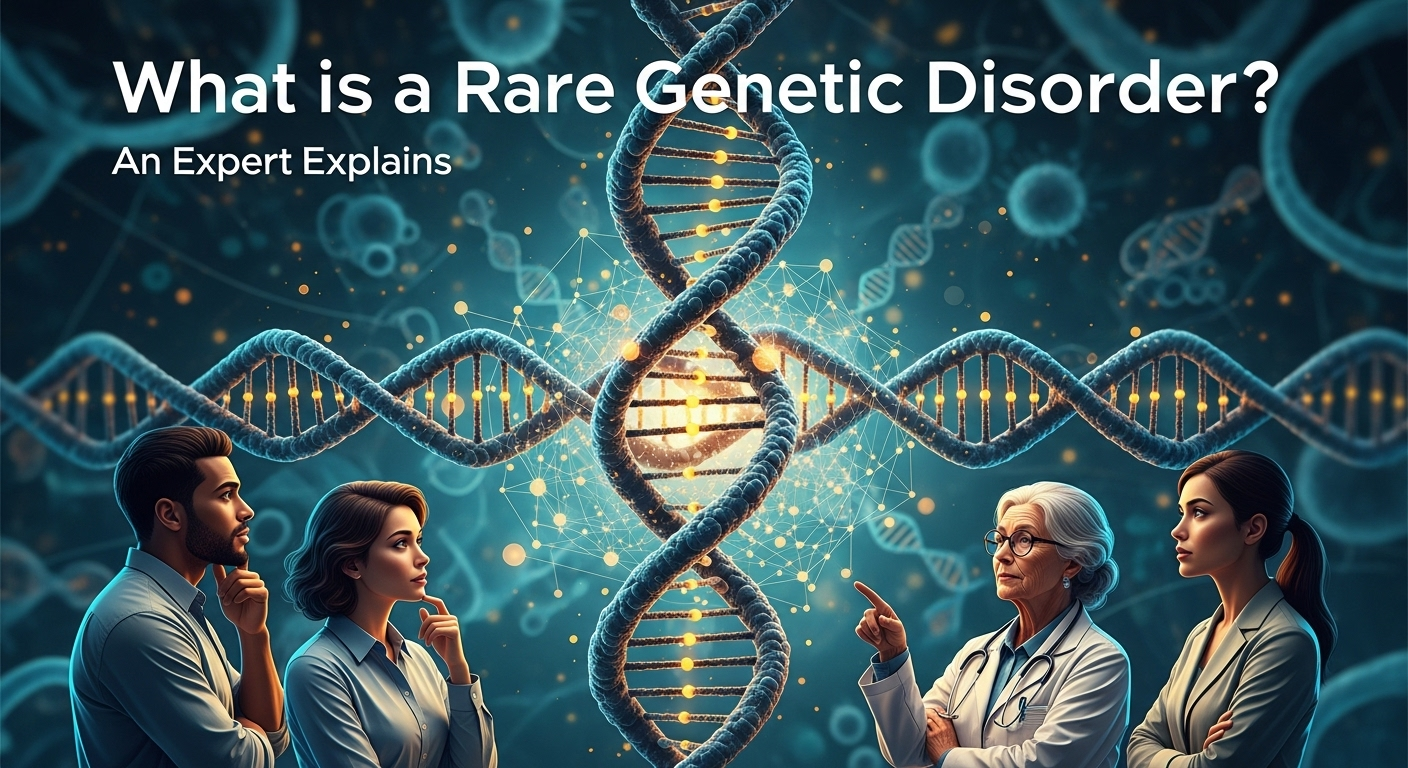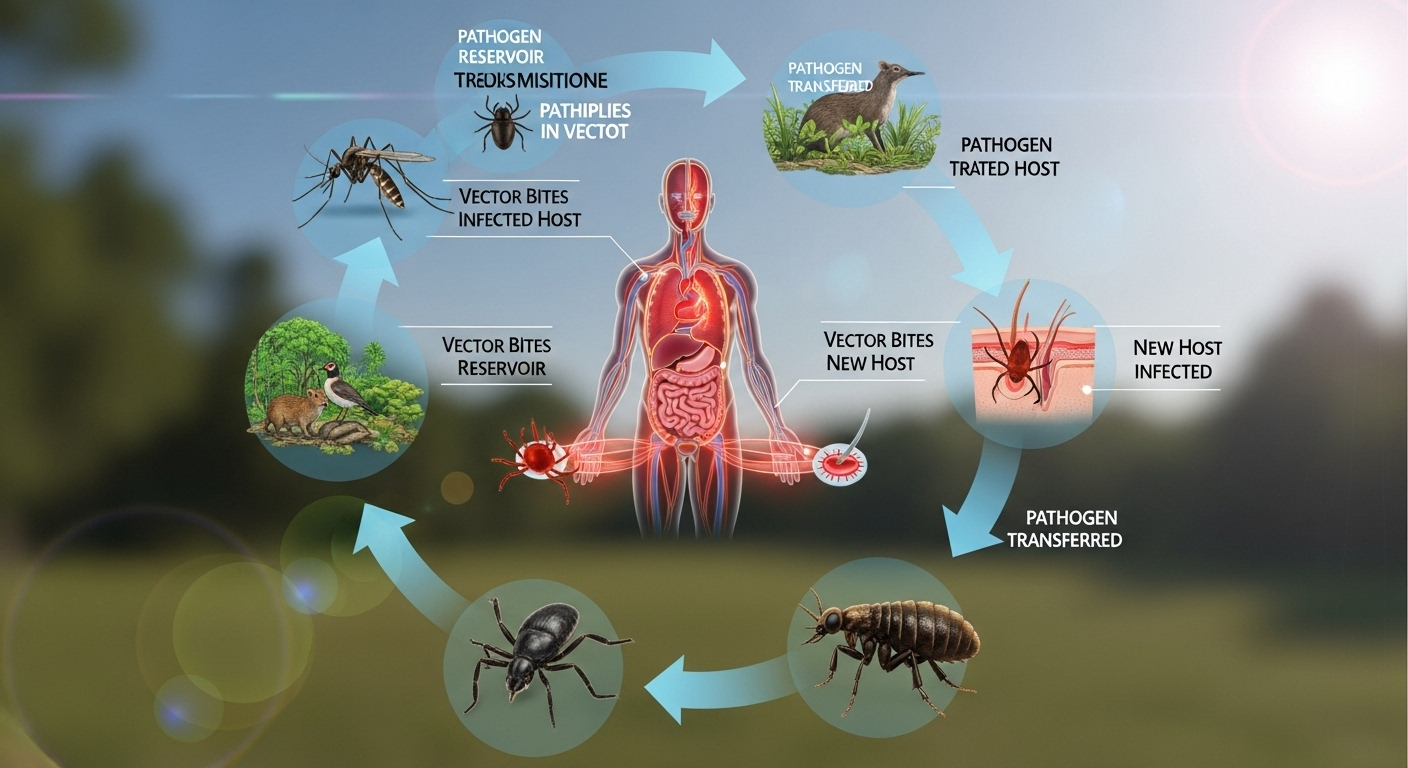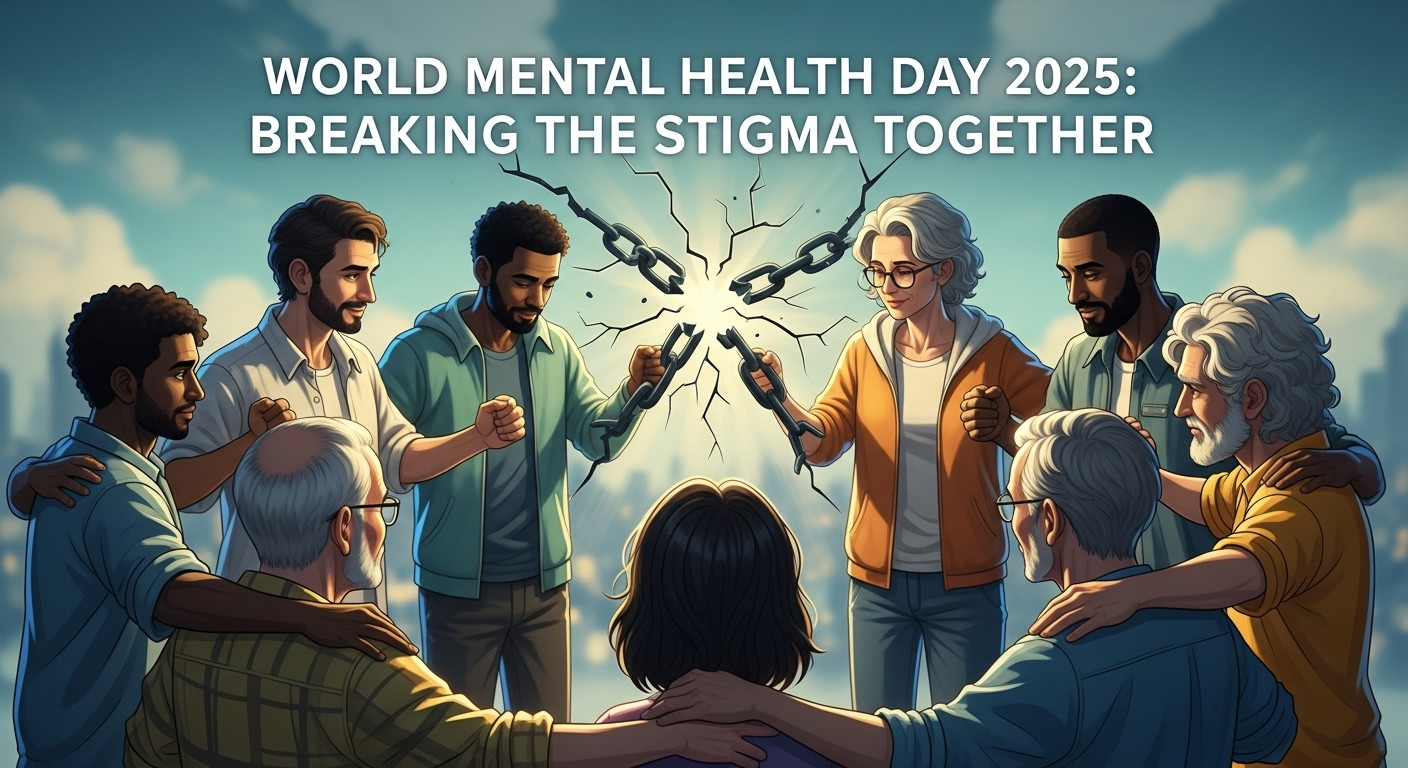In a world where medicine often focuses on common ailments like the flu or high blood pressure, there exists a vast, complex, and often overlooked universe of health conditions. These conditions affect millions of people worldwide, yet many have never heard of them. They are the "rare diseases," a category where the journey to a diagnosis can be long and arduous, and the path to treatment is frequently uncharted. The fundamental question for patients, families, and even many healthcare providers is, what is considered a rare genetic disorder? This question opens the door to understanding a significant and challenging area of human health, defined not just by its infrequency but by the unique genetic blueprints that cause it. This expert guide will demystify the world of rare genetic disorders, from their official definitions to the profound impact they have on human lives.
Table of Contents
ToggleDefining "Rare": A Matter of Numbers and Geography
The term "rare" can feel subjective, but in the medical and regulatory world, it has a precise definition. These definitions are crucial because they unlock pathways for research funding, drug development, and patient support. However, the exact number that qualifies a disease as rare varies by country or region, creating a slightly different landscape depending on where you live. This numerical threshold is the first step in understanding the scope of these conditions.
In the United States, the Orphan Drug Act of 1983 provides the benchmark. A disease is considered rare if it affects fewer than 200,000 people in the U.S. population. This legislation was a landmark achievement, creating financial incentives (like grants, tax credits, and market exclusivity) for pharmaceutical companies to develop "orphan drugs"—treatments for these small patient populations that might otherwise be ignored due to a lack of commercial profitability.
Meanwhile, the European Union has a different, prevalence-based definition. A disease is defined as rare when it affects no more than 1 in 2,000 people. While the numbers seem different, both definitions serve the same purpose: to identify conditions that require special attention and resources. The paradox of rare diseases is that while each one is individually uncommon, collectively, they are not. It's estimated that there are over 7,000 identified rare diseases, and together they affect an estimated 300 million people worldwide. This means that nearly 1 in 10 people in some countries may be living with a rare disorder.
The Genetic Foundation: When the Blueprint Has a Flaw
The vast majority—about 80%—of rare diseases are genetic in origin. This means they are caused by an anomaly or "mutation" in an individual's DNA. Our DNA contains thousands of genes, each acting as a specific instruction for building and maintaining our bodies. When a gene is altered, the instruction it provides can become faulty, leading to a protein that doesn't work correctly or isn't produced at all. This single error can have cascading effects throughout the body, resulting in a genetic disorder.
Understanding the genetic basis is key to diagnosis, family planning, and the development of future therapies. These disorders are not caused by lifestyle choices or environmental factors alone; they are written into a person's biological code from conception. The nature of the genetic change and how it is passed through families determines the type and characteristics of the disorder.
1. The Different Types of Genetic Mutations
Genetic disorders arise from different kinds of errors in our DNA. Scientists categorize them into three main groups, which helps in diagnosing the condition and understanding its potential severity. Each type of mutation affects the genetic code in a unique way.
- Single-Gene Disorders: As the name suggests, these disorders are caused by a mutation in a single gene. They are often the most "straightforward" to trace through families because they follow predictable inheritance patterns. Think of a gene as a single recipe in a massive cookbook. If one critical recipe has a typo, the resulting dish (a protein) will be flawed. Examples of single-gene disorders include Cystic Fibrosis, Huntington's Disease, and Sickle Cell Anemia.
- Chromosomal Disorders: These occur when there is a change in the structure or number of chromosomes. Chromosomes are the structures that hold our genes, like volumes in a library. A chromosomal disorder can involve a missing chromosome, an extra chromosome (like in Down Syndrome, which is caused by an extra copy of chromosome 21), or large-scale deletions or rearrangements of a chromosome segment. These changes affect hundreds or even thousands of genes simultaneously, often leading to a wide range of developmental and health issues.
- Complex or Multifactorial Disorders: These are the most complicated. They result from a combination of mutations in multiple genes interacting with environmental factors and lifestyle choices. While a person may be genetically predisposed to a condition, it might not manifest without certain environmental triggers. Many common chronic diseases like heart disease and diabetes are multifactorial, but so are some rare conditions. This complexity makes them much harder to diagnose and predict.
2. Understanding Inheritance Patterns
How a genetic disorder is passed from one generation to the next is described by its inheritance pattern. This is a critical piece of information for families, as it helps determine the risk of future children being affected. Genetic counselors specialize in explaining these complex patterns.
- Autosomal Recessive: For a person to have a disorder with this inheritance pattern, they must inherit two copies of the mutated gene—one from each parent. The parents are typically "carriers," meaning they have one copy of the mutation but do not show symptoms of the disorder. With each pregnancy, there is a 25% chance the child will have the disorder, a 50% chance they will be a carrier like the parents, and a 25% chance they will inherit two normal genes. Cystic Fibrosis is a classic example.
- Autosomal Dominant: In this case, only one copy of the mutated gene is needed to cause the disorder. A person with the condition has a 50% chance of passing the mutated gene (and thus the disorder) to each child. The gene is "dominant" over its normal counterpart. Huntington's Disease and Marfan Syndrome are well-known autosomal dominant disorders.
- X-Linked: These mutations are located on the X chromosome, one of the two sex chromosomes. Since males (XY) have only one X chromosome, a mutation on it will almost always cause the disorder. Females (XX) have two X chromosomes, so a normal gene on one X can often compensate for a mutated gene on the other, making them carriers. X-linked disorders, like Duchenne Muscular Dystrophy and Hemophilia, are therefore much more common in males.
The Labyrinth of a Rare Disease Journey
Living with a rare genetic disorder, or caring for someone who does, is often characterized by a series of unique and formidable challenges. These struggles go far beyond the physical symptoms of the disease itself and touch every aspect of life, from initial diagnosis to daily management and emotional well-being. The path is often isolating and requires immense resilience from patients and their families.
One of the most significant hurdles is the "diagnostic odyssey." This term describes the long, frustrating, and often expensive journey patients endure to get an accurate diagnosis. Due to the rarity of their condition, patients may see numerous specialists over several years, undergoing countless tests and receiving multiple misdiagnoses along the way. Many doctors may have never encountered the specific disorder in their entire career. This delay not only prolongs uncertainty and anxiety but can also lead to irreversible damage if treatment or management is not started in a timely manner.
Once a diagnosis is finally made, a new set of challenges emerges. For many rare diseases, there is a lack of information and limited treatment options. Patients and their families often become experts on their own condition out of necessity, scouring medical literature and connecting with other families online. While some rare diseases have approved treatments, a staggering 95% have no FDA-approved therapy. Management often focuses on alleviating symptoms rather than curing the underlying cause, requiring a dedicated, multidisciplinary team of healthcare professionals to coordinate care. The emotional, social, and financial burden on families can be immense, impacting work, relationships, and mental health.
Navigating Diagnosis, Treatment, and Care
Despite the immense challenges, advancements in science and healthcare are providing new hope and better strategies for managing rare genetic disorders. The approach is shifting from reactive symptom management to proactive, personalized care models. This involves sophisticated diagnostic tools, coordinated medical teams, and a growing pipeline of innovative treatments.
1. The Power of Genetic Testing
Genetic testing is the cornerstone of diagnosing a rare genetic disorder. It can confirm or rule out a specific condition, provide information about its likely progression, and inform family planning decisions. Several types of genetic tests are used:
- Newborn Screening: In many countries, newborns are screened for a panel of treatable genetic disorders a day or two after birth. This allows for early intervention that can prevent severe disability or death.
- Diagnostic Testing: When a doctor suspects a specific disorder based on symptoms, a diagnostic test can be ordered to look for mutations in a particular gene or chromosome.
- Whole Exome/Genome Sequencing: For complex cases without a clear answer, these powerful tests can analyze thousands of genes (exome) or a person's entire genetic code (genome) at once. This technology has been revolutionary in ending the diagnostic odyssey for many families.

A confirmed diagnosis is more than just a label; it is a gateway. It allows families to connect with a community of others facing the same challenges, access disease-specific information, and become eligible for clinical trials. It provides a sense of clarity after what may have been years of confusion and uncertainty, empowering patients to become active participants in their care.
2. The Role of Multidisciplinary Care
Because rare genetic disorders often affect multiple body systems, effective care requires a coordinated, multidisciplinary team. A single patient might need to see a geneticist, a neurologist, a cardiologist, a pulmonologist, a physical therapist, a nutritionist, and a social worker. Without coordination, care can become fragmented, with specialists not communicating and treatment plans conflicting.
Centers of Excellence for rare diseases bring these experts together under one roof. These specialized clinics provide holistic care, where the team collaborates to create a comprehensive, individualized plan for the patient. This model ensures that all aspects of the patient's health are considered, leading to better outcomes and a significantly reduced burden on families who would otherwise have to manage dozens of appointments across different hospitals and cities. This integrated approach is the gold standard for rare disease management.
Examples of Rare Genetic Disorders
To make the concept of a rare genetic disorder more concrete, it's helpful to look at a few examples. These conditions vary widely in their genetic cause, symptoms, and prevalence, illustrating the immense diversity within the "rare" category.
| Disorder Name | Type of Disorder | Primary Body System Affected | Estimated Prevalence |
|---|---|---|---|
| Cystic Fibrosis (CF) | Single-Gene (Autosomal Recessive) | Respiratory & Digestive Systems | 1 in 2,500-3,500 Caucasians |
| Huntington's Disease | Single-Gene (Autosomal Dominant) | Central Nervous System | 1 in 10,000 |
| Ehlers-Danlos Syndromes (EDS) | Group of Single-Gene Disorders | Connective Tissue (Skin, Joints, Blood Vessels) | 1 in 5,000 (for most common type) |
| Muscular Dystrophy (Duchenne) | Single-Gene (X-Linked Recessive) | Muscular System | 1 in 3,500-5,000 newborn males |
Cystic Fibrosis is caused by mutations in the CFTR gene, leading to thick, sticky mucus that clogs the lungs and digestive system. Huntington's Disease is a progressive neurodegenerative disorder caused by a mutation in the HTT gene, which leads to the breakdown of nerve cells in the brain. The Ehlers-Danlos Syndromes are a group of disorders affecting connective tissues, resulting in symptoms like overly flexible joints, stretchy skin, and fragile blood vessels. These examples highlight how a single genetic error can have profound and specific consequences.
The Power of Community, Advocacy, and Research
Perhaps one of the most powerful forces in the rare disease world is the community itself. Facing isolation and a lack of resources, patients and their families have organized to create a global network of support, advocacy, and change. No one has to face a rare disease diagnosis alone.
- Patient Advocacy Groups: Organizations like the National Organization for Rare Disorders (NORD) in the U.S. and EURORDIS in Europe play a vital role. They provide patients with reliable information, connect them with support groups, lobby governments for policy changes, and fund critical research. These groups give a collective voice to millions who might otherwise go unheard.
- The Importance of Research: Research is the engine of hope. Scientists are constantly working to understand the mechanisms of these diseases and develop new treatments. This includes the development of orphan drugs, and more recently, groundbreaking technologies like gene therapy, which aims to correct the underlying genetic defect. Participating in clinical trials is a way for patients to access cutting-edge treatments while contributing to scientific knowledge that will benefit future generations.
- The Rise of a Global Community: The internet and social media have revolutionized the rare disease experience. Patients from opposite sides of the world can now connect in online forums and Facebook groups, sharing advice, offering emotional support, and reducing the profound sense of isolation that often comes with a rare diagnosis. This global community is a lifeline for many, providing practical knowledge and the comfort of knowing they are not alone.
***
Conclusion
So, what is considered a rare genetic disorder? It is a condition defined by a specific numerical threshold of prevalence, but its reality is so much more than a statistic. It is a journey that begins in our DNA, caused by mutations in the very blueprint of our being. While individually rare, these disorders collectively represent a major public health challenge, marked by diagnostic delays, a scarcity of treatments, and a heavy emotional and financial toll. Yet, this is also a story of incredible resilience, community, and hope. Through the tireless efforts of patients, advocates, and researchers, the landscape is changing. Advances in genetic testing are shortening the diagnostic odyssey, collaborative care models are improving quality of life, and innovative research is bringing the promise of new therapies—and even cures—closer than ever before.
***
Frequently Asked Questions (FAQ)
Q: How many rare diseases are there?
A: It is estimated that there are over 7,000 identified rare diseases, and new ones are still being discovered as our understanding of genetics improves. Collectively, they affect an estimated 300 million people worldwide.
Q: Are all rare diseases genetic?
A: No, but the vast majority are. Approximately 80% of rare diseases have a known genetic origin. The remaining 20% can be caused by other factors, including rare infections, autoimmune diseases, and rare cancers.
Q: Where can I find support if I or a family member is diagnosed with a rare genetic disorder?
A: A great place to start is with major patient advocacy organizations. In the United States, the National Organization for Rare Disorders (NORD) is a primary resource. In Europe, EURORDIS serves a similar role. These organizations can connect you with disease-specific support groups, expert physicians, and up-to-date information.
Q: What is an "orphan drug"?
A: An orphan drug is a pharmaceutical product developed to treat a rare disease or condition. Because the patient population is so small, there is little financial incentive for companies to produce these drugs. To encourage development, governments (like the U.S. via the Orphan Drug Act) provide incentives such as grants, tax credits, and a period of market exclusivity.
***
Article Summary
This article provides an in-depth explanation of what constitutes a rare genetic disorder. It begins by establishing the official definitions used in the United States (affecting fewer than 200,000 people) and the European Union (affecting no more than 1 in 2,000 people), highlighting the paradox that these individually uncommon conditions are collectively common, affecting millions globally. The article explores the genetic foundations, explaining how single-gene, chromosomal, and complex mutations cause these disorders and detailing common inheritance patterns like autosomal recessive, autosomal dominant, and X-linked. It then delves into the significant challenges faced by patients, including the "diagnostic odyssey" and the lack of treatments for 95% of rare diseases. The piece outlines strategies for navigating care through advanced genetic testing and multidisciplinary teams, provides concrete examples of rare disorders in a comparative table, and emphasizes the crucial role of community, advocacy groups like NORD and EURORDIS, and research in providing hope and driving progress. The article concludes by reinforcing that a rare genetic disorder is more than a statistic—it is a complex human journey being transformed by resilience, science, and community.














